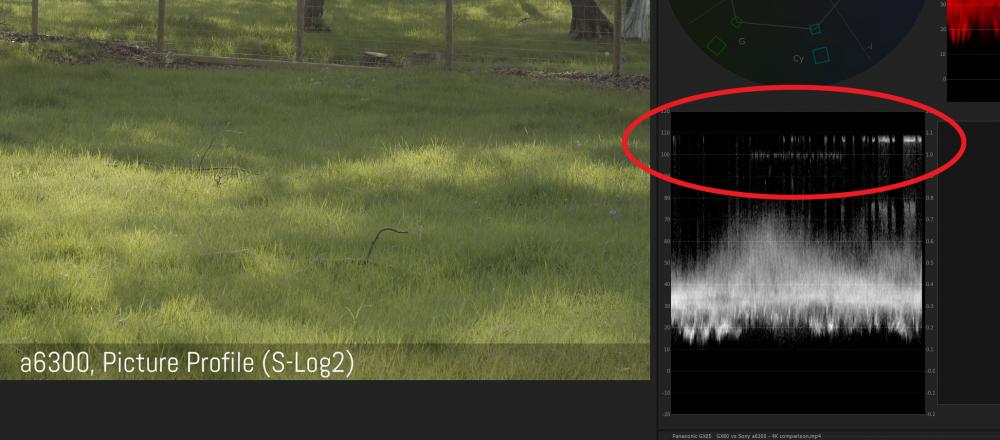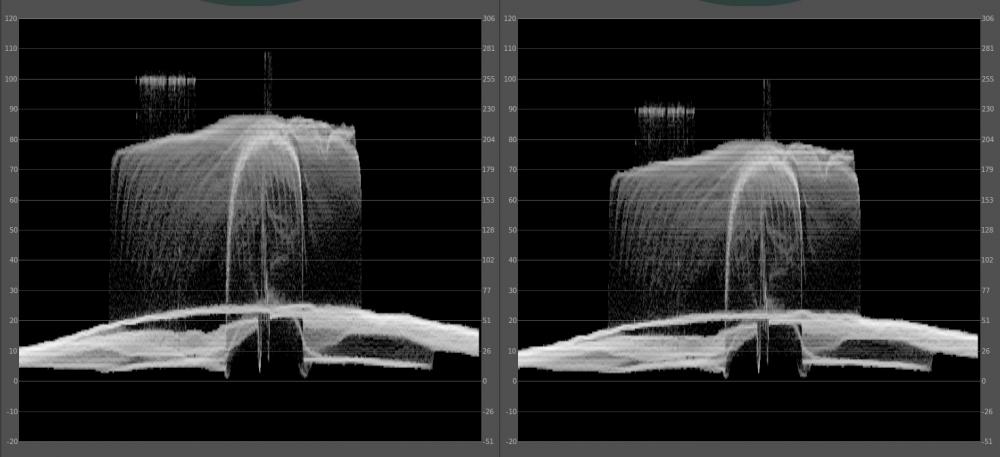-
Posts
227 -
Joined
-
Last visited
Content Type
Profiles
Forums
Articles
Everything posted by Cary Knoop
-
I am not familiar with this camera but does it wrap the 23.976p signal into a 60i signal as some old model cameras still do? If so you have be careful with editing your footage, if you do it right you get back a clean 23.976p video but if not it will be a blended or interlaced mess. If you upload a second of video using 23.976 we can verify if that is the case.
-
It depends on the destination media. For broadcast you would probably have to deliver to 60i (although ATCS does have a 1080p24 standard to be converted to 60i during broadcasting but it is almost never used). So in that case you would have to start with 23.976. For Blu-ray you should render 24p instead of telecine it to 60i. I really do not know what you mean by 60hz.
-
I don't understand what you are asking here. How did the 60p get in the picture? Generally to convert I would do the following: Change between 24p and 23.976p This is relatively easy, you just slow down or speed up your footage in your favorite editor. For short scenes you do not need to adjust the speed of the audio but for longer scenes you have to. You resample the audio, this is a perfectly harmless operation, typically you can, but do not need, to maintain pitch because the speed change is very low. Change from 24p (and 23.976p) to 60i This process is called telecine and is relatively harmless but still it does degrade image quality. For this you need to slow down 24p to 23.976p and then you turn every second of video into 3 fields (fields are half frames). The result will be interlaced video. You could optionally frame double that to 60p. Change from 24p to 25p You speed up the 24p to 25p. This does have an impact on the duration of the video but it is the only option that does not severely impact image quality. You need to resample the sound and have to remain pitch (the pitch change is much more noticeable to your ears than the speed up). Change from 60i or 60p to 24p or 23.976p This is a bad conversion and should be avoided at all cost. Deinterlacing video Always use frame doubling, your result will be much better. So convert 50i to 50p not to 25p and convert 60i to 60p not to 30p. Generally I would advice to avoid blending, repeating or removing frames unless there is absolutely no alternative, because you image quality will degrade. .
-
I agree. What Sigma understands better than anyone else is that there is a real need for lenses specially designed for crop sensors, and most video cameras that use the EF mount are crop sensor or smaller. A lens specially designed for a crop sensor has a better resolution than a full frame lens if all other factors are similar.
-
No, for other features it does not make any difference. Also it is easy to go from one speed to the other by speeding up or slowing down the footage. However if your footage is long you would want to resample the audio to match the speed adjustment.
-
That video has out of range highlights both for the Panasonic and the Sony, even the ungraded log footage has it. I think that if you make comparative test you should be very accurate and make sure your levels are correct and that you match exposure based on the scopes because an ISO value in one camera brand is not necessarily the same as in another brand and unless you compare T-stops for lenses you also have to account for differences even with the same F-stop. The train comparison uses lenses with different focal lengths and apertures.
-

How to handle out of range video levels (GX80 / GX85 in Premiere Pro)
Cary Knoop replied to Cary Knoop's topic in Cameras
Yes, exactly! The Panasonic GX80/85 is not the only one, I think the many of the Sony cameras do a similar thing. Always check when you edit clips with video levels for out of range values! -

How to handle out of range video levels (GX80 / GX85 in Premiere Pro)
Cary Knoop replied to Cary Knoop's topic in Cameras
No, Premiere Pro interprets the information just fine. Many cameras do record out of range values for overhead. By the way Davinci Resolve will do the same with video levels. In Resolve you also would need to bring down the overhead values into legal. But Resolve does not have the 'Clamp Video Signal' so you have to look and see if there are out of range values. You could as an alternative force data levels in Resolve. I would recommend always to check for overhead when you are dealing with video levels. The values in the scopes are just scales superimposed on the data. If that confuses you I would recommend to only look at the percentage/IRE scale on the left. If you import multiple clips where some are video and others use full range Premiere correctly maps all of those onto the 0-100% scale. But out of range values (which obviously are not possible for full range) will be mapped outside of that range. Which means that levels outside the 0-100% range need to be brought into legal range. -
Not if you setup your system properly. There are several ways to change it based on the footage. I use madVR but there are alternatives as well. And obviously for professional editing and coloring you should use at least two monitors. One for the UI using the GPU and another one using a dedicated video card like the Decklink for the actual Video output.
-
Modern monitors should have no problems using refresh rates for 24p or 23.976p.
-

How to handle out of range video levels (GX80 / GX85 in Premiere Pro)
Cary Knoop replied to Cary Knoop's topic in Cameras
The GX80/85 does not record values beyond 255, it outputs video levels (16-235) but it also records levels outside this range as overhead. Premiere Pro maps both (legal) video 16-235 levels and full range RGB levels to 0-255 as it internally processes all video as RGB. Illegal levels will be outside of this range and thus you can have values outside the 0-255 range. -
Apart from a global shutter I do not know of any cadence differences with respect to the GH4, so as long as it is real and not crackpot "filmic" science I would certainly want to learn about it.
-
What is a 'more cinematic motion cadence'?
-
Yachts: Too expensive! Jets: Too fancy! Jetpack: Too dangerous! Trip to Mars: Too exotic! Panasonic GH5: Just right!
-

How to handle out of range video levels (GX80 / GX85 in Premiere Pro)
Cary Knoop replied to Cary Knoop's topic in Cameras
Exporting using RGB (full range) levels only happens when you export with codec options such as ProRes4444 or DNxHR. Most of the time you will export video levels. Any good NLE will use 32bit or float internal representation so this is not really an issue. I would recommend to always stick with video levels on export unless someone specifically requests RGB. -
That's it, I am going to get this and travel in time:
-
I made a small tutorial on how to handle out of range video levels in Premiere Pro. Some cameras record out of range video levels, one of them is the Panasonic Lumix GX85 / GX80 on which this tutorial is based. Hope this helps and please go easy on me, as this is my first tutorial. The UHD should be available shortly as YouTube is still processing it.
-
Great, but why not have a trailer in 4K?
-
I would at least feather the frame of the Star Wars trailer and ideally put it in some kind of monitor that looks like one that is used in the Star Wars movies. That way your video and the trailer look more integrated.




